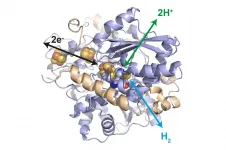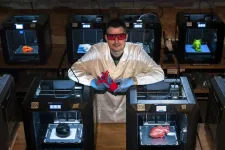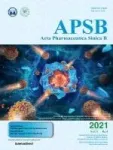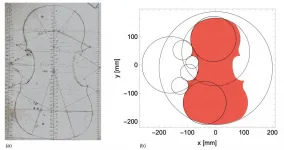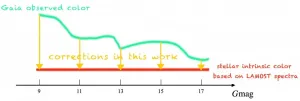(Press-News.org) Multiple sclerosis, or MS for short, manifests itself slightly differently in each person - which is why some call it "the disease of a thousand faces." Arguably the worst manifestation of MS is its chronic progressive form. Unlike the more common relapsing-remitting variant (RRMS), in which sufferers are often symptom-free for months or even years, patients with the primary progressive form of the disease (PPMS) see their condition steadily deteriorate with no remissions.
Poorly insulated neurons die off
Today's therapeutic approaches are based on the assumption that the immune system is making a mistake and waging an inappropriate attack on the layer of myelin that surrounds and insulates the nerve cells' long, cable-like branches called axons. "In progressive MS, neurodegenerative processes steadily multiply and cause more and more neurons in the brain and spinal cord to die," explains Dr. Alexander Brandt, lead author of the study that has now been published in the journal JAMA Neurology. "However, we still do not know what exactly causes this disease variant."
Together with Professor Friedemann Paul from the Experimental and Clinical Research Center (ECRC), a joint institution of Charité - Universitätsmedizin Berlin and the Max Delbrück Center for Molecular Medicine in the Helmholtz Association (MDC), as well as eleven colleagues from Berlin, Irvine and Toronto, Brandt now hopes he has shed some more light on the subject. As the team reports in their study, it appears that the simple sugar N-acetylglucosamine, or GlcNAc for short, could play an important role in the development of progressive MS. Inside an organism, GlcNAc and other sugar molecules attach to proteins on the cell surface in the form of chains. This mechanism, which is known as glycosylation, controls various cell functions by forming branched structures from these sugar chains.
The sugar molecule could serve as a biomarker
"We studied 120 subjects from Irvine and were able to show that, in this particularly severe form of the disease, there are significantly lower concentrations of N-acetylglucosamine in the blood serum than there are in healthy people or patients with relapsing-remitting MS," reports Brandt. At the time of this study, the physician was head of the Translational Neuroimaging laboratory in Paul's Clinical Neuroimmunology group at Charité. Brandt has since moved to the School of Medicine at the University of California, Irvine (UCI) as an associate professor of neurology, but remains a guest researcher at Charité.
"In another study of 180 patients from Berlin with relapsing-remitting or progressive MS, we also found that low serum levels of GlcNAc are associated with the development of the progressive form of the disease, clinical disability and neurodegeneration," adds the study's corresponding author, Professor Michael Demetriou of UC Irvine. "This opens up potential new avenues for identifying, at an early stage, which patients are at higher risk of progressive MS and adjusting their treatment accordingly."
Human treatment studies now in the pipeline
Back in autumn 2020, Brandt, Demetriou and other researchers working with the then lead author Dr. Michael Sy from UC Irvine published a study in the Journal of Biological Chemistry. They had administered GlcNAc to lactating mice and found that the animals passed on this simple sugar, which incidentally is also contained in human breast milk, to their offspring. This stimulated primary myelination of the neuronal axons in the young animals. "We also observed in the mouse experiments that N-acetylglucosamine activates myelin progenitor cells, thus promoting both primary myelination and the repair of damaged myelin," says Brandt.
The researchers therefore hope that GlcNAc not only has potential as a suitable biomarker for progressive MS, but could also pave the way for new therapeutic strategies. "Our hope is that we can use GlcNAc and the associated glycosylation mechanism to promote myelin repair and thus reduce neurodegeneration," summarizes Brandt. An initial, as-yet-unpublished phase I trial has just been completed with around 30 subjects, where the scientists investigated the safety of taking GlcNAc in certain doses. If it is shown to be safe, the scientists hope to be able to conduct further studies into this simple sugar's possible efficacy as an MS therapy.
INFORMATION:
This study was funded in part by a grant from the National Institute of Allergy and Infectious Disease and the National Center for Complimentary and Integrative Health as well as the German Excellence Cluster NeuroCure.
- Joint press release of MDC and Charité - Universitätsmedizin Berlin -
Scientific contact
Dr. Alexander U. Brandt
Director, Translational Neuroimaging Laboratory
Clinical Neuroimmunology
Experimental and Clinical Research Center (ECRC)
Charité - Universitätsmedizin Berlin
alexander.brandt@charite.de
About the ECRC
As a joint institution of the MDC and Charité, the Experimental and Clinical Research Center facilitates and promotes collaborative research between basic scientists and clinical researchers. It is a place where new approaches are developed for diagnosis, prevention and therapy, and translated to patients as quickly as possible. The Clinical Neuroimmunology Lab led by Prof. Friedemann Paul investigates the underlying causes and potential therapies for autoimmune neuroinflammatory diseases such as multiple sclerosis.
Max Delbrück Center for Molecular Medicine in the Helmholtz Association (MDC)
The Max Delbrück Center for Molecular Medicine in the Helmholtz Association (MDC) is one of the world's leading biomedical research institutions. Max Delbrück, a Berlin native, was a Nobel laureate and one of the founders of molecular biology. At the MDC's locations in Berlin-Buch and Mitte, researchers from some 60 countries analyze the human system - investigating the biological foundations of life from its most elementary building blocks to systems-wide mechanisms. By understanding what regulates or disrupts the dynamic equilibrium in a cell, an organ, or the entire body, we can prevent diseases, diagnose them earlier, and stop their progression with tailored therapies. Patients should benefit as soon as possible from basic research discoveries. The MDC therefore supports spin-off creation and participates in collaborative networks. It works in close partnership with Charité - Universitätsmedizin Berlin in the jointly run Experimental and Clinical Research Center (ECRC), the Berlin Institute of Health (BIH) at Charité, and the German Center for Cardiovascular Research (DZHK). Founded in 1992, the MDC today employs 1,600 people and is funded 90 percent by the German federal government and 10 percent by the State of Berlin. http://www.mdc-berlin.de
AdaptiFont has recently been presented at CHI, the leading Conference on Human Factors in Computing.
Language is without doubt the most pervasive medium for exchanging knowledge between humans. However, spoken language or abstract text need to be made visible in order to be read, be it in print or on screen.
How does the way a text looks affect its readability, that is, how it is being read, processed, and understood? A team at TU Darmstadt's Centre for Cognitive Science investigated this question at the intersection of perceptual science, cognitive ...
A giant mosasaur from the end of the Cretaceous period in Morocco that could have reached up to eight metres long is the third new species to be described from the region in less than a year, bringing the total number of species up to at least 13.
The high diversity of the fauna shows how mosasaurs, giant marine lizards related to snakes and Komodo dragons, thrived in the final million years of the Cretaceous period before they, and most of all species on Earth, were wiped out by the impact of a giant asteroid 66 million years ago.
The new species, named Pluridens serpentis, had long, slender jaws with over a hundred sharp, ...
Modern vaccines such as those against Sars-CoV-2 use tiny lipid spheres to transport genetic information into cells and let the body build up an immune defense against the virus. A team of scientists from Erlangen, Dresden, and London has now developed a completely new method to very efficiently deliver not only genes but also drugs and other substances into cells. The researchers from the Max-Planck-Zentrum für Physik und Medizin (MPZPM) in Erlangen, the Technical University of Dresden, and The Institute of Cancer Research in London have named the method Progressive Mechanoporation and have now published it in the scientific journal "Lab on a Chip". They have also filed a patent.
Ruchi Goswami and Alena Uvizl were part of a team of scientists led by Salvatore Girardo (Erlangen) ...
An enzyme could make a dream come true for the energy industry: It can efficiently produce hydrogen using electricity and can also generate electricity from hydrogen. The enzyme is protected by embedding it in a polymer. An international research team with significant participation of scientists from Technical University of Munich (TUM) has presented the system in the renowned science journal Nature Catalysis.
Fuel cells turn hydrogen into electricity, while electrolysers use electricity to split water to produce hydrogen. Both need the rare and thus expensive precious metal platinum as a catalyst. Nature has created a different solution: Enzymes, referred to as hydrogenases. ...
Experts in virtual reality locomotion have developed a new resource that analyses all the different possibilities of locomotion currently available.
Moving around in a virtual reality world can be very different to walking or employing a vehicle in the real world and new approaches and techniques are continually being developed to meet the challenges of different applications.
Called Locomotion Vault, the project was developed by researchers at the Universities of Birmingham, Copenhagen, and Microsoft Research. It aims to provide a central, freely-available ...
A study published in the journal Scientific Reports reveals the genetic structure of the land snail Xerocrassa montserratensis and it provides new scientific tools for the improvement of the conservation of this endemic and threatened species in Catalonia. This land mollusc, identified in the late 19th century in the Montserrat mountain, has a reduced geographical distribution limited to the province of Barcelona, and it is a protected species in the area of the natural parks of Montserrat and Sant Llorenç del Munt i l'Obac.
The study is led by the lecturer Marta Pascual, from the Faculty of Biology and the Biodiversity Research Institute of the University of Barcelona ...
Skeletal muscles make a tremendous variety of actions stabilizing the body in different positions. Despite their endurance during daily activities, they can undergo several mild injuries caused by sport, accidental overstretching, or sudden overtwisting. Luckily mild injuries can be quickly healed; however, when a large part of muscles is damaged or resected surgically, the full recovery can be impossible. Muscle regeneration is challenging, but the development of innovative biocompatible materials tackles that problem. Recently, a multinational team of scientists led by dr. Marco Costantini from ...
Acta Pharmaceutica Sinica B Volume 11, Issue 4 Publishes
https://www.sciencedirect.com/journal/acta-pharmaceutica-sinica-b/vol/11/issue/4
Special Issue: The Biological Fate of Drug Nanocarriers
This special issue includes seven review and nine research articles from some leading scientists in the field that further the discussion on subtopics of in vivo fate of drug nanocarriers.
Guest Editors: Wei Wu, Professor, Department of Pharmaceutics, School of Pharmacy, Fudan University, Shanghai, China; Tonglei Li, Professor, Department of Industrial & Physical Pharmacy, Purdue University, West Lafayette, IN, USA; Ying Zheng, Professor, State Key Laboratory of Quality Research in Chinese Medicine, Institute of Chinese Medical Sciences, University of Macau, Macau, China.
The Journal ...
How to predict the sound produced by a tonewood block once carved into the shape of a violin plate? What is the best shape for the best sound? Artificial Intelligence offer answers to these questions.
These are the conclusions that researchers of the Musical Acoustics Lab of Politecnico di Milano presented in a study that was recently published in Scientific Reports.
In the article "A Data-Driven Approach to Violinmaking" the Chilean physicist and luthier Sebastian Gonzalez (post-doc researcher) and the professional mandolin player Davide Salvi (PhD student) show how a simple and effective neural network is able to predict the vibrational be-havior of violin plates. This prediction is obtained from a limited set of geometric and mechanical ...
The Large Sky Area Multi-Object Fiber Spectroscopic Telescope (LAMOST) has helped Gaia achieve millimagnitude (mmag) precision in photometry, according to a study led by researchers from National Astronomical Observatories of Chinese Academy of Sciences (NAOC) and Beijing Normal University (BNU).
Their study was published in The Astrophysical Journal.
If you look at the sky on a clear, starry night, you may notice that Aldebran is relatively red and Rigel is blue. Why? The answer stems from their intrinsic physical properties. Precisely measuring magnitudes ...

